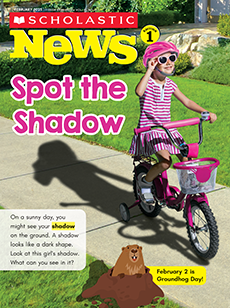A guide for using our resources
Children will sequence the steps it takes for workers to turn the Chicago River green for St. Patrick’s Day.
Vocabulary: dye, fades
Social Studies Focus: St. Patrick's Day
CCSS and Similar State Standards: RL.1.1 key details; RF.1.1 punctuation; RF.1.3 decode words; W.1.7 participate in research; RI.1.10 read and discuss first-grade texts; SL.1.2 ask and answer questions
Simple, spectacular ideas to boost your lessons.
Paired Text Suggestion: How to Catch a Leprechaun by Adam Wallace
Paired Text Suggestion: How to Catch a Leprechaun by Adam Wallace
- Follow a leprechaun as he avoids traps that have been set out to catch him! Students will love the fun rhymes and illustrations.
Background Builder: St. Patrick's Day
Background Builder: St. Patrick's Day
- Show students on your classroom calendar when St. Patrick’s Day will be. What do students think about when they hear “St. Patrick’s Day?” Tell them that often people wear green or decorate with green items. What is something green that they have seen? End the discussion by asking students if they have ever seen a green river. Then reveal the issue’s cover!
Hands-On Activity: Color-Changing Experiment
Hands-On Activity: Color-Changing Experiment
Skill: predicting, experimenting
Materials: Color-Changing Experiment skill sheet, pencil, crayons, red cabbage, warm water, vinegar, baking soda, clear plastic cups
- Make water change colors! Students will make predictions, follow along with a class experiment, and create their own individual experiments.
- Review how the workers in the issue use orange dust to turn the Chicago River green! Tell students that they will see water change color today.
- Begin by preparing the cabbage water. Soak the red cabbage in warm water. If you are able to, use boiling water and let it sit for 10 minutes. When it is a bluish color, strain the cabbage and show students the color of the water.
- Provide students with the Color- Changing Experiment skill sheet and have them fill out the top of the sheet. Then introduce a new ingredient. Show students the vinegar. Have students write it down in their chart and make a prediction of what color the water will turn when vinegar is added. Add the vinegar and have students record results on their sheet. Repeat for baking soda, then vinegar again.
- Lastly, provide small cups of each ingredient to each student or small group. Have students choose two or three of the ingredients to mix together and record what color appears in their cup! Discuss varying results.
